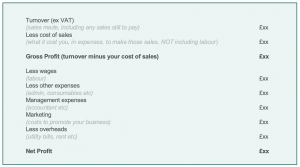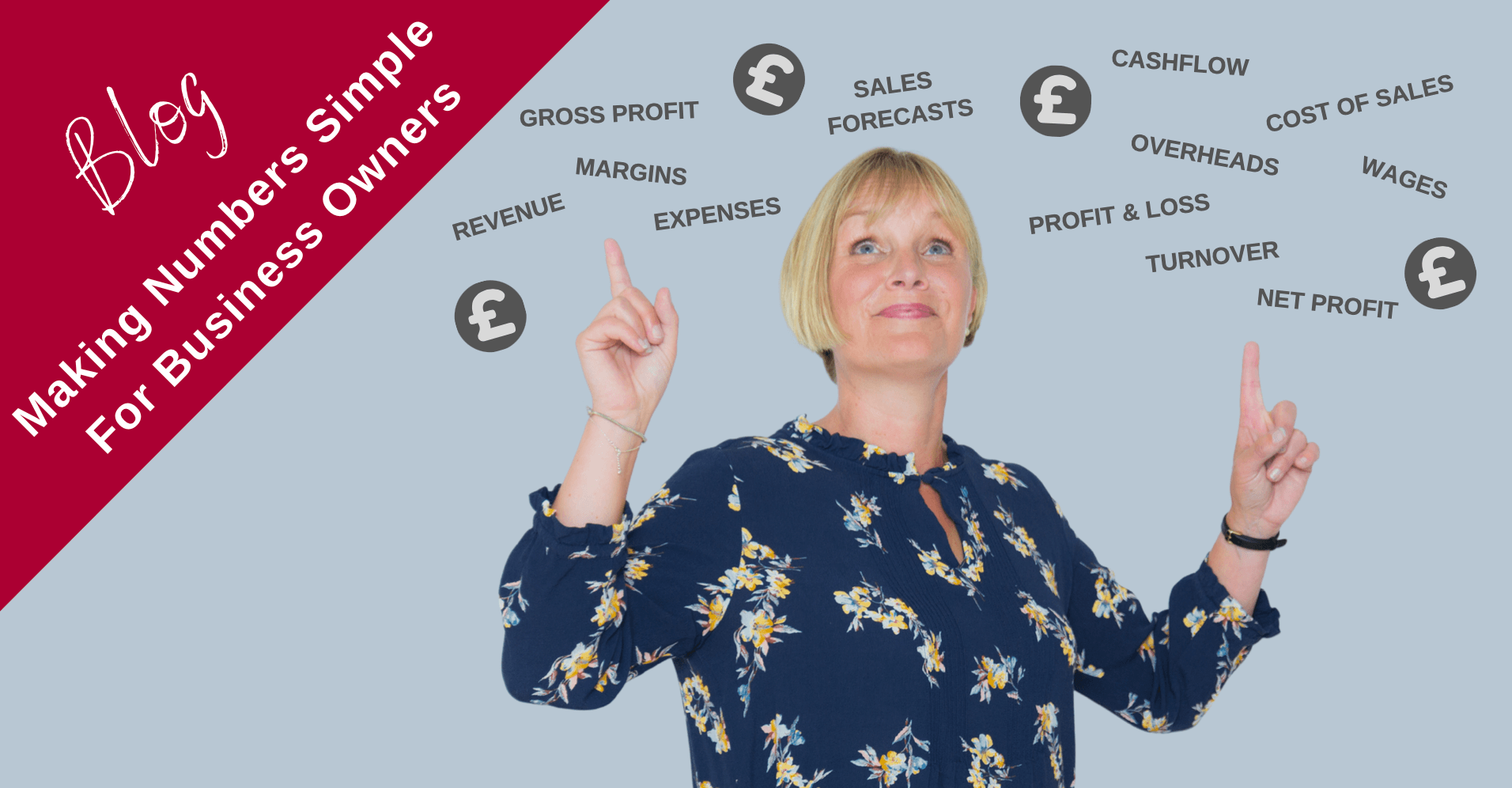
Kara Birrell is our Passionate PA based in Southampton. She joined us in August 2022 after a 20+ year career in Operations Management and Hospitality.
Kara has always had a passion for numbers… more specifically, profit! In all her previous roles, she has been responsible for margins and, in the hospitality sector where margins are notoriously tight, Kara relished the challenge of not just knowing the numbers herself but inspiring those around her to care about them too.
In this blog, Kara shares her top three tools for making the numbers in your small business simple and meaningful.
Making numbers simple
Everybody knows it’s vital to have a handle on their business’s numbers, but why? How can a small business owner with responsibility for everything from service delivery to marketing, IT to strategy planning, be expected to know one end of a P&L from another?
I get it. And here’s the truth… a lot of people do not understand their numbers.
However, getting a handle on them at an early stage will be the difference between a profitable business that allows you to live the life you desire, and a self-employed “job” where you become trapped.
In my many years of working in hotels and restaurants, and running my own hospitality consultancy, it was very common to find business owners who ran their business finances from their bank account. But this is just a daily snapshot of where your business is, it doesn’t give you a full picture or a forecast for what’s to come.
It is vital that all small business owners have their finger on the financial pulse to:
- ensure that they can afford to pay their bills when they are due
- ensure they can pay staff and freelancers for the value they are adding to the business, and
- (most importantly) ensure the business is actually making a healthy profit.
As a small business owner or sole trader, you might well be thinking I don’t need big profit margins – just enough to pay yourself is plenty?
But, hold up… what about planning for your future and the growth of the business, paying taxes and saving for a rainy day – that will require investment and nobody wants to be a busy fool!
As much as financial reporting may well be seen as ‘over kill’ for a small business, it can be a doddle. I promise 😉
Here’s a simple guide to a few basic financial reports that are easy to produce in excel yet essential for the success of your business.
TOOL #1: Sales Forecasts
This is a simple projection of what business you currently have secured on your books or in your sales pipeline, and then what further sales you hope to make.
‘Secured’ means deposit paid, full amount paid or purchase order received.
‘Hope’ means exactly that; you think it’s going to happen based on an intelligent estimate, but there is absolutely no guarantee yet.
A simple excel spreadsheet with the months listed at the top, and then your projected sales figure underneath is all you need. All your figures should be excluding VAT, if this is applicable to your business.
Top Tip: It’s great to look back on your forecast at the end of the month to see how close your forecast was. This review, which should only take a few moments, will give you a good guide as to how much you understand your sales pipeline. If both figures are very similar, you’ve nailed it!
TOOL #2: Cashflow Forecast
Simply put, your cashflow forecast will give you an indication of how much you should have in your bank at the time when bills need to be paid.
Again, a simple excel spreadsheet will suffice with your outgoings and actual/anticipated income in different columns.
Top Tips: Your sales forecast will help with your income figures, but you also need to take into account the following:
- If you don’t take payment at the time of the service/sale, put in strict credit control procedures and make sure that your customers are fully aware of your payment terms before the service/sale is agreed. Make sure you have a procedure for chasing payment when it’s overdue!
- Negotiate good supplier terms. Make sure there is no big difference from when you pay your suppliers, to when your customers pay you.
- If you need to hold stock, it is vital that this is tightly controlled with regular stock takes. Cash in the bank is far better than products in your stock room. It’s a fine balance to get stock in at the right time, at the right price, while avoiding having cash tied up in it.
TOOL #3: Profit and Loss Account
You can easily produce a basic monthly profit and loss account for your business. The point of this is to understand your profit margin. In simple terms, it is your turnover less all your expenses and you want it to be as high as possible otherwise your business may not be viable.
A simple guide:

Once you have the above reports in place, it should give you a far better understanding of how your business is performing on a weekly or monthly basis. Doing this review yourself also means there are no nasty surprises at the end of the year from your accountant.
Making margins matter
Now that you have a way to track your numbers, you can ask yourself whether your margins (gross and net profit as a percentage of turnover) are close to your industry’s recommended margins.
A quick Google search will tell you roughly what these are, but a great accountant will also be able to advise.
If your margins are far higher or far lower than your industry’s recommended figures, then it’s time to dig a little deeper into your numbers…
- Can you control your spending?
- Can you cut supplier costs?
- Is it time for an efficiency review?
- Can you increase your selling price, without over pricing yourself against your competitors?
Numbers are the life blood of any business. People only really find them boring when they haven’t fully understood their importance. It is essential for any successful business owner to know where their numbers are likely to be at any given time and these tools should help you do that.
If you would like help in setting up these financial reports for your business, or digging deeper into the numbers to determine what they really mean for you, then please get in touch. Profit is my passion so I would love to help!
You can find out more about Kara by clicking here!
Further blogs from The Passionate PA:






